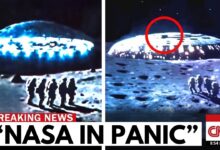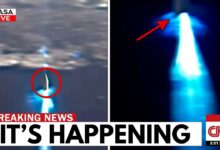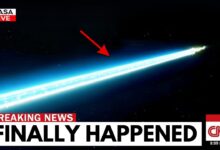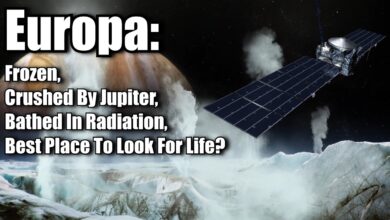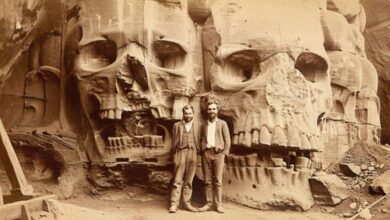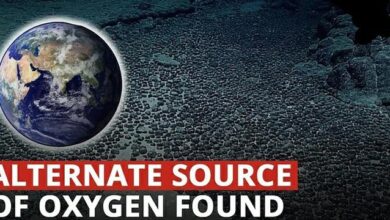Michio Kaku Breaks In Tears “The Moon Is NOT What You Think!”

Travelling to the Moon might cost about $100,000 per pound of payload. Recently, China announced its intention to go to the Moon and may even surpass the United States in the race. Last year, NASA admitted that their timeline lags behind that of the Chinese.
This entire whirlwind began when Michio Kaku, the renowned theoretical physicist and futurist, stepped onto the stage at a major space science conference in Geneva. Known for his bold cosmic visions, Kaku carried with him an unusual urgency, even a hint of unease, that instantly electrified the atmosphere.
The title of his presentation, “The Moon: A Paradigm Shift in Understanding,” had already fueled speculation. Many expected a discussion on past lunar missions or perhaps speculation about colonization. But what followed sent shockwaves through the scientific community and beyond.
“Before we start,” he said, “don’t forget to hit like and subscribe for updates.”
Kaku began unveiling new findings from an international project using advanced quantum deep imaging satellites orbiting the Moon. These satellites, equipped with unprecedented gravitational lensing and subsurface radar scanning technologies, revealed results that defied conventional understanding of planetary formation.
The first shock was that the Moon’s internal density readings were vastly inconsistent with its known mass and core structure. The instruments detected enormous hollow regions beneath the lunar surface—some stretching hundreds of kilometers. These voids weren’t random caves or lava tubes but were arranged symmetrically, as though engineered.
Images behind Kaku showed clean geometric patterns beneath the lunar regolith. Regular energy pulses, and areas reflecting like metallic alloys, lay hidden beneath ages of dust. An audible gasp rippled through the audience.
Kaku pressed on, revealing thermal imaging data showing unusual heat signatures emerging from these subsurface cavities. These heat patterns didn’t match volcanic activity or residual formation heat. Instead, they mirrored the thermal profiles of dormant but still active reactors.
This wasn’t guesswork. Data was verified independently by three major space agencies from Europe and Asia. Something inside the Moon was emitting energy that, by current scientific models, simply shouldn’t exist.
Then came the gravitational anomalies. Since the Apollo missions, minor lunar gravitational fluctuations had been recorded but dismissed as measurement errors or local terrain effects. But the new data showed these fluctuations forming a grid-like pattern correlating precisely with the underground voids and geometric structures.
This grid stretched from pole to pole, suggesting not only an artificial distribution of mass but possibly an ancient mechanism that once allowed the Moon to maintain its orbit with extraordinary precision.
Kaku didn’t conclusively declare the Moon to be artificial. He avoided directly saying “alien origin” or “artificial satellite.” Yet the implications were unmistakable:
The Moon, long thought to be debris from a collision between Earth and a Mars-sized object, might not be entirely natural. It could be partly constructed—a shell concealing something far older, far more deliberate.
Such a revelation rippled through every field. If the Moon wasn’t purely natural, humanity’s entire understanding of Earth’s history would be shaken. The Moon’s gravity stabilizes Earth’s tilt, drives tides, and influences biological rhythms. Its presence has been critical to the evolution of life itself.
What if that presence was no cosmic accident—but an intentional placement?
Kaku posed a chilling hypothetical. Imagine a highly advanced civilization placing the Moon in orbit. Such an achievement would demand technological capabilities far beyond anything humanity has ever conceived—a civilization classified as Type II or III on the Kardashev scale. Such beings wouldn’t merely observe cosmic events; they would shape them, guiding evolution and possibly even curating life itself.
Kaku cautiously touched on the Moon’s cultural and historical significance. Throughout human history, civilizations revered the Moon with almost mystical devotion. Myths from the Sumerians to the Mayans and Egyptians speak of a time before the Moon existed, or of it arriving suddenly. These stories, long dismissed as poetic metaphor, might now carry echoes of forgotten truths.
Standing solemnly before the crowd, Kaku posed profound questions: If the Moon was placed deliberately, what does that mean for humanity’s place in the cosmos? Are we a random accident of evolution—or a product of conditions purposefully designed by an external intelligence?
The Moon’s perfect synchronous rotation, its matching size with the Sun as viewed from Earth, and its life-stabilizing effects were all once considered cosmic coincidences. But with new evidence of structural anomalies and unexplained internal energy, those coincidences felt far less innocent.
He then shifted to address the Moon’s age. Scientists have long puzzled over the Moon appearing slightly older than Earth itself—a paradox under traditional formation theories. But if it was inserted into Earth’s orbit after the planet cooled, possibly to nurture life, this paradox vanishes.
Yet Kaku stopped short of proclaiming definitive answers. Instead, he urged the scientific community to keep an open mind. “We stand,” he said, his voice steady, “on the edge of a new understanding of our origins. This is no time for dogma. It’s time for disciplines to unite—for astrophysics to meet archaeology, myth to meet quantum physics, and planetary science to intersect with consciousness studies.”
As he concluded, one question lingered above all others:
If the Moon isn’t fully natural, what is it for? Is it a beacon, a stabilizer, a vault, or a machine—and could it still be active today in ways we’ve yet to comprehend?
This question has since echoed far beyond the conference walls. Astronomers, historians, philosophers, and even artists have begun reimagining the Moon’s role—not just as a cold rock in the sky, but as possibly the most complex and enigmatic structure within humanity’s reach.
The Moon might not merely be an ancient relic. It might be an artifact—a message waiting to be deciphered, a partner in Earth’s journey, or even a silent guardian watching over humanity for countless millennia.
